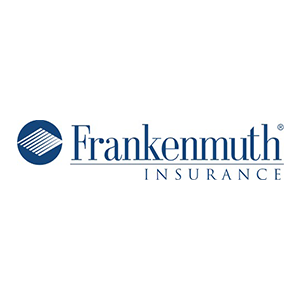September 29, 2025
Discover the hidden truths behind auto insurance policies and the tactics insurers use to keep consumers in the dark. This article unveils the secrets the industry would rather keep secret. By understanding these intricacies, consumers can maneuver through the often confusing and intimidating world of auto insurance with greater ease. Knowing the tactics used by insurance companies allows drivers to opt for policies that genuinely meet their needs, while avoiding costly pitfalls. Read on to unlock these secrets and take control of your auto insurance destiny.
1. Understanding the Fine Print
Many drivers skim through their insurance policies, missing critical clauses that could radically affect their coverage. Insurers often embed unexpected conditions and exclusions within the fine print, leading to unwelcome surprises during claim time. Repeated phrases and technical terms intended to baffle rather than inform are all too familiar. Familiarizing oneself with commonly used terms in policies helps in recognizing clauses that could otherwise be easily overlooked. Being aware of these potential pitfalls enhances a driver's ability to secure adequate and reliable coverage.
Legal jargon is often used in auto insurance policies to create a barrier to understanding for the average consumer. This complex language can obscure the true meaning of coverage terms and exclusions. By employing a dictionary or consulting with a legal professional, drivers can better understand what they are agreeing to. Breaking down this jargon empowers consumers to make informed decisions and negotiate terms that align with their needs. Ultimately, demystifying legalese in auto insurance is an essential step towards effective policy management.
Exceptions and limitations are the fine threads carefully woven into the fabric of any auto insurance policy. An adept policyholder should scrutinize their documents for terms like excluding or unless, which typically prelude important restrictions. These terms indicate gaps or exclusions that may leave a driver potentially unprotected in specific scenarios. Understanding the prevalence and impact of these limitations equips drivers to demand greater clarity from their insurers, ensuring they secure comprehensive coverage. Avoiding assumptions and scrutinizing every aspect of a policy is key to uncovering these hidden clauses.
2. The Truth About Premium Calculations
Insurance premiums are calculated based on a plethora of factors, many of which remain partially concealed. Companies assess drivers' risk profiles using criteria such as driving history, age, and geographic location. Each of these factors contributes differently to the overall premium cost. Understanding these criteria empowers consumers to evaluate why their premiums are set at particular levels and identify areas for potential savings. Monitoring and improving certain factors, like driving record, can lead to significant reductions in premiums.
One lesser-known yet impactful aspect of premium calculation is the credit score of the policyholder. Often, insurers use this as a metric to predict a driver's likelihood of filing claims. A strong credit history can result in markedly lower premiums, whereas poor credit may lead to higher costs. Regularly checking and maintaining a healthy credit score can thus lead to favorable conditions when purchasing insurance. Being aware of this hidden factor provides consumers with another tool to potentially lower their insurance expenditure.
Insurance companies often factor in gender and age when calculating premiums, although these criteria are less frequently disclosed to consumers. Typically, younger drivers face higher premiums due to perceived inexperience, while older drivers might benefit from reduced rates due to proven reliability. According to MoneyGeek, drivers aged 26 to 50 generally pay the lowest rates, as their stronger safety records coincide with crash rates dropping to 328 per 100 million miles for those in their 30s and 314 for those in their 40s. Gender differences in rates can also arise, depending on statistical risk assessments made by insurers.
3. Claim Process Pitfalls
Increasingly, consumers face claim denials that could have been avoided with a deeper understanding of policy details. Some common reasons for denials include issues like paperwork errors or failure to report incidents promptly. Such pitfalls can be mitigated through meticulous documentation and swift communication. Awareness of insurers' specific requirements surrounding notifications and claims submission can pave the way for successful processing. Foreseeing and adhering to these protocols helps secure the anticipated outcomes from one's insurance policy.
Each insurance company prescribes specific timeframes and procedural steps for filing and resolving claims. Those who adhere strictly to these guidelines often find smoother resolution compared to those who miss deadlines or overlook necessary procedures. Familiarizing oneself with these processes before an incident occurs ensures preparedness in a crisis. Documentation of claims progress ensures both adherence to timelines and proof of compliance if disputes arise. Ultimately, preparedness in adhering to a company's procedures enhances efficiency and satisfaction during the claims process.
Facing a denied claim can be discouraging, but all hope need not be lost with the possibility of appeal. Understanding the insurer's appeal process is crucial, typically starting with a thorough review of the denial letter. Submitting an appeal involves presenting new information or rectifying any errors made during the initial filing. Seeking external advice, like a legal consultation, can provide valuable insights into building a substantial case for review. Persistence, transparency, and timely submissions often improve the odds of a successful appeal outcome.
4. Rate Increase Misinformation
Insurance companies often advertise rate consistency, yet specific events can still prompt sudden increases. While claims and accidents predictably lead to hikes, factors like credit changes or the accumulation of traffic violations can stealthily affect rates. Understanding and proactively managing these elements can prevent unforeseen rate changes. Additionally, exploring insurer-specific triggers allows consumers to minimize risks that lead to hikes. Knowledge of these events helps policyholders anticipate and mitigate rate increases.
No-claim bonuses are rewards for policyholders who maintain claim-free records over a set duration. These bonuses vary among insurers and can translate into tangible savings during policy renewals. Staying informed of no-claim bonus eligibility and maintenance strategies can reduce overall insurance costs. Some insurers publicize bonus status transparently, while others may require policyholder inquiry. Recognizing and utilizing these bonuses positively impacts a driver's long-term insurance strategy.
Accident forgiveness is often advertised by insurers as a safeguard against premium hikes following a first at-fault accident. Yet, understanding the conditions underlying this benefit is essential, as it is not universally applicable nor available from all insurers. For eligible drivers, accident forgiveness can alleviate post-incident financial stress, maintaining premium levels stable. However, awareness of any enrollment fees or prerequisites ensures realistic expectations. Such understanding helps policyholders assess the true value of accident forgiveness effectively.
5. The Reality of Full Coverage
The term full coverage often misleads consumers into believing they enjoy comprehensive protection without fail. In reality, full coverage typically combines liability, collision, and comprehensive insurance, blending protections at a cost. Gaps still exist, particularly in areas like personal injury protection or uninsured motorist coverage. Recognizing what falls within or outside these terms is pivotal in evaluating a policy's efficacy. By expanding one's understanding of full coverage, consumers can align policies with their actual coverage priorities.
Even with full coverage, drivers may unwittingly find themselves exposed to specific risks without notice. Omissions often involve non-standard incidents that require additional endorsement, like mechanical breakdowns or specific forms of property damage. Identifying such gaps involves understanding potential incident exposure and validating alignment with policy terms. Tailoring policies to emphasize anticipated exposures fills these gaps, achieving genuine full protection. Foresightful policy selections mitigate overlooked vulnerabilities and enhance peace of mind.
Auto insurance is complex, with many strategies employed by companies to maximize profits. By understanding these secrets, consumers can make more informed decisions, finding the best coverage at fair prices. Knowledge is power, and this article empowers you to make savvy, educated choices. Implement these insights to save money while ensuring comprehensive protection. Don't let insurers steer you; become the driver of your insurance policy choices. For more information about the services that we offer, reach out to our incredible team at Huston Insurance today!











